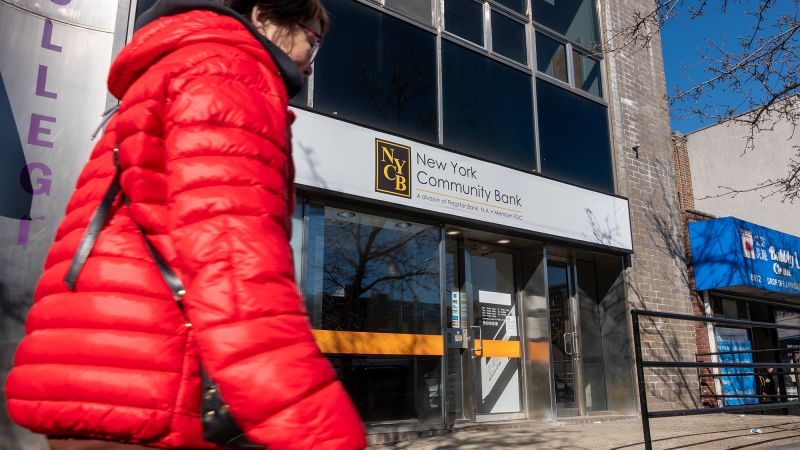It’s no secret that commercial real estate (CRE) has become a source of stress for banks. Had they known there was going to be a pandemic that would completely disrupt where people work, they likely would have given more pause to lending money to clients who lease out space in office buildings.
But now there’s a daunting timeline: Over the next three years, $2.2 trillion in commercial real estate loan payments are due, according to data firm Trepp.
With office vacancy rates at an all-time high as people continue to work remotely, office building landlords are left between a rock and a hard place. As a result, many have slashed rent or sold off properties at a loss.
All that could potentially mean very significant sums of missed loan payments when they are due. Yet the stress isn’t felt equally across all banks.
While the nation’s largest banks are on the hook for hundreds of billions of dollars in loans to commercial real estate clients, it’s the smaller, regional banks that mostly bear the brunt of the stress because they have the highest exposure (more on that later). These banks account for around 80% of the total loans US banks have made to commercial real estate firms, according to Goldman Sachs economists.
Across all US banks with over $100 billion in assets, commercial real estate represents 12.5% of their aggregate loan portfolios, according to an analysis by S&P Global Ratings. But for banks with less than $10 billion in assets, the sector represents 38% of their loan portfolios.
This means significant losses from commercial real estate loans could potentially lead to their collapse, Fitch Ratings said in a December report.
Regional banks were on high alert recently after New York Community Bancorp (NYCB) reported steeper-than-expected future losses on commercial real estate loans.
Banks are required to set aside a certain minimum amount of tier-one capital, or funds that are readily available in emergencies and also cover loan and lease losses. Of the 100 largest banks in the US by asset size, NYCB’s subsidiary, Flagstar Bank, has the second-largest concentration (at 470%) of commercial real estate loans to tier-one capital plus its allowance for loan and lease losses. That’s according to an analysis published by BankRegData using the latest available data from the banks as well as the Federal Deposit Insurance Corporation, the regulatory agency that oversees banks. (Flagstar did not respond to CNN’s inquiry.)
Valley National Bank (VLY), based in Morristown, New Jersey, has the highest exposure to CRE, with loans in the sector accounting for 475% of its tier-one capital including its allowance for loan and lease losses.
Having CRE exposure above 300% is one of the main factors that could indicate a bank is exposed to significant risk, according to guidance the FDIC jointly released with two other US financial regulation agencies in 2006. In a December advisory note, the agency said it “continues to be concerned that institutions with concentrated CRE exposures may be vulnerable to real estate downturn.”
By contrast, JPMorgan Chase — which is currently lending the most money to commercial real estate clients — has a much lower exposure to the sector, at just 61%, according to BankRegData.
So why is it that the smaller, regional banks are so much more exposed to commercial real estate?
To differentiate themselves from the nation’s largest banks, smaller, regional banks tend to emphasize building relationships with local businesses and customers, giving them a unique and deep understanding of the local economies they operate in.
Fitch refers to this practice as a “community-based lending model” and says it’s partially responsible for their high exposure to commercial real estate.
The CEO of Valley National Bank, Ira Robbins, told CNN in a statement that the bank “has been a relationship-focused commercial real estate lender for many decades.” The sector “serves as a critical component for supporting the economic vitality of the local community,” he added.
After the Great Recession, banks with less than $250 billion in assets shifted a lot of their lending activity from construction and land development, a source of steep losses at that time, to commercial real estate, according to Fitch.
Fitch also found that “as certain lending products, like residential mortgage or credit cards, have moved to scale players, smaller banks are left mainly with commercial & industrial and CRE lending as core products.”
Commercial real estate covers much more than just office space. It also includes multi-family housing, rental properties and retail space, among other components. Of these subsectors, though, office real estate presents the biggest concern, with vacancies growing the fastest.
In the fourth quarter of last year, the national office vacancy rate rose to a record-breaking 19.6%, according to Moody’s Analytics. That’s the largest quarterly increase since the first quarter of 2021 and larger than the 19.3% level reached twice in 40 years.
The FDIC said in 2007 that banks with high exposures to CRE could mitigate their risks if they have “portfolio diversification across property types.” In other words, a bank whose CRE lending portfolio is more evenly distributed across the subsectors, rather than heavily skewed towards one, could be less vulnerable to a downturn.
None of the nine subcomponents of Valley National Bank’s $28.2 billion commercial real estate portfolio account for more than 25% of it. Office real estate is among the bank’s smaller commercial real estate subcomponents.
Robbins of Valley National Bank told CNN “we remain comfortable with our diverse and granular commercial real estate portfolio.”
Additionally, Fitch found that even though smaller banks are more exposed to commercial real estate lending, they’re seeing fewer late-stage delinquencies and nonpayments compared to larger banks. The ratings agency attributes that to smaller banks lending more to owner-occupied properties who tend to make more timely loan payments compared to, for instance, office building owners.
That said, the FDIC is “strongly” recommending that banks with high commercial real estate exposures, particularly in office lending, set aside more capital “to provide ample protection from unexpected losses if market conditions deteriorate further.”
Read the full article here




